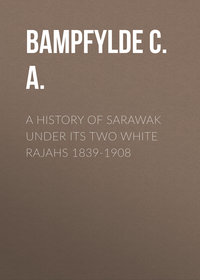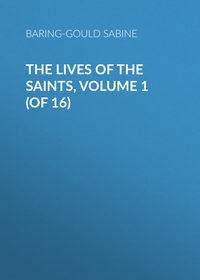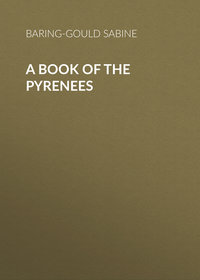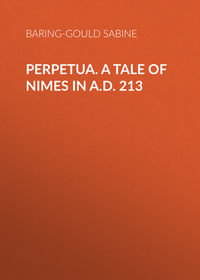 полная версия
полная версияA Book of North Wales
On a summer day the bard ascends one of the Welsh mountains “spy-glass in hand. Through the clear, tenuous air and the calm, shimmering heat, I beheld far, far away over the Irish Sea many a fair scene.” So he falls asleep, dreams, and finds himself among the fairies, whom he approaches, and of whom he requests permission to join their society. They snatch him up forthwith and fly away with him over lands and seas, till they reach the Castle Delusive, where an Angel of light appears, and delivers him from their hands.
With the angel as his guide he visits the City of Destruction, and its streets, Pride, Lucre, Pleasure. Then he soars to the City of Emmanuel.
The whole is allegorical and far-fetched, and absolutely intolerable to modern taste; but there was a time, and that not far distant, when allegory was much appreciated in Wales. In England also, Bishop Wilberforce, with his Agathos, and Munro, with his Dark River and other tales of like character, were the last of a school that has, happily, passed away for ever.
Ellis Wynne and his guide traverse the Well of Repentance and come to the Catholic Church, on the roof of which sit various princes brandishing their swords as her protectors.
Over the transept of the Church of England sits Queen Anne, holding the Sword of Justice in the left hand, and the Sword of the Spirit in the right. “Beneath the left sword lay the Statute Book of England, and beneath the other a big Bible. At her right hand I observed throngs clad in black – archbishops, bishops, and learned men upholding with her the Sword of the Spirit, whilst soldiers and officials, with a few lawyers, supported the other sword.”
He does not paint the Welsh Church as in a satisfactory condition in his day. The angel seats him in the rood-loft of one of them, “and we saw some persons whispering, some laughing, some staring at pretty women, others prying at their neighbours’ dress from top to toe, others showing their teeth at one another, others dozing, others assiduous at their devotion, but many of these latter dissimulating”; and he points out the irreverence and sacrilege caused by the law that required a man to be a communicant before he could receive office.
Ellis Wynne died in 1734, and is buried under the altar at Llanfair.
Mochras Spit, a grand field for finding shells, is the starting-point of the Sarn Badrig, a reef that runs for something like twenty miles into the Cardigan Bay, and is about four yards wide. At ebb tide about nine miles are exposed, but the foam about the rest can be traced far out to sea. Traditionally it was one of the embankments that enclosed the Cantref y Gwaelod, the low-lying hundred, well peopled, that contained twelve fortified towns, but which was submerged in the fifth century through the folly of the drunken Seithenin, who neglected to keep up the sea-wall. The story has been told already.
A short poem attributed to Gwyddno, whose territory was overwhelmed, has been preserved, in which he laments: —
“Stand forth, Seithenyn, and behold the dwelling of heroes, the plain of Gwyddno is whelmed in the sea,Accursed be the sea-warden, who, after his carousal, let loose the destroying fountain of the raging deep.Accursed be the watcher, who, after drunken revelry, let loose the fountain of the desolating sea.A cry from the sea rises above the ramparts; to heaven does it mount, – after fierce excess comes a long lull.A cry from the sea arouses me in the night season.A cry from the sea rises above the winds.A cry from the sea drives me from my bed at night.”Llanaber Church, which has been restored, deserves a visit from either Harlech or Barmouth. It was built in the thirteenth century, and is in the pure Early English style. In the east end is a single lancet. The nave has a clerestory. The exterior is plain, and all the enrichment is within. An inscribed stone is inside that was rescued from serving as a footbridge over the Ceilwart. It bears on it, “Cælexti Monedorigi.”
All the district from Barmouth to the Aber Glaslyn comprises Ardudwy, and the mountains are of Cambrian grit, “an immense block of mountains running from Maentwrog to Barmouth, and separating the Harlech country from all the eastern portion of Merionethshire. Although they all constitute the same group without a single break, they are called by different names according to the most prominent points” (Murray). They are strewn with small tarns that are interesting, though not enclosed by craggy walls, and abound in fish.
The story goes that the men of Ardudwy, like the early Romans, finding themselves short of women, made an incursion into the Vale of Clwyd and brought away a number of the fairest damsels, whom they conveyed into their own country. They were pursued and overtaken at a place called Beddau Gwyr Ardudwy, where a fight ensued. Instead of the women acting as did the Sabine damsels, rushing between the combatants and separating them, the maidens, seeing their ravishers get the worst of it, precipitated themselves into the lake that now bears the name of Llyn-y-Morwynion, where they were drowned, rather than return to their homes.
The mountains are traversed by an ancient paved road, called the Roman Steps, that comes from the valley of the Afon Erbu at Pont Grible, and strikes past the Llyn-y-Morwynion to Llyn Cwm Bychan, and thence to Talsarnau (the Head of the Roads), whence passage was made across the Traeth Bach to Mynffordd. It would seem to have been a branch from the Sarn Helen, which followed very nearly the course of the modern road, as straight as an arrow, from Dolgelley to Maentwrog.
At Egryn, between Llanaber and Llanddwywe, was formerly an abbey, but of that nothing now remains, and its site is occupied by a farmhouse. Here lived in his early days William Owen Pughe, an enthusiastic antiquary and lover of all things Celtic. In 1785 he laid the foundation of his great work, a Welsh-English Dictionary, which was printed and published in London in 1803. Some idea of the richness of the Welsh language may be gained from the fact that, whereas Johnson’s English Dictionary, as enlarged by Todd, contains about 61,000 words, the first edition of Dr. Pughe’s Welsh Dictionary contained as many as 100,000 words.
Another great work in which he was engaged was the transcription and editing of the three volumes of the Myvyrian Archæology of Wales, a mine of information on the early history of Wales. It was published in 1801-7.
As a number of the MSS. printed have been since destroyed by the fires that have consumed so many Welsh houses and their libraries, we may well be thankful that the publication was then made.
One of the most disastrous of the fires which have caused so much of Welsh literature to perish was that of Llwyd’s collection. Edward Llwyd, born in 1660, devoted his life to the accumulation of materials relative to Wales. He visited Ireland, Cornwall, Brittany, and Scotland in quest of MSS., and formed a compilation of his collections in forty volumes in folio, ten in quarto, and above a hundred in smaller size. These were offered, after his death, to Jesus College, Oxford, but owing to Dr. Wynne, then Fellow of Jesus, having been on bad terms with Llwyd, the college, by his advice, refused the offer.
They were then purchased by Sir Thomas Seabright, of Beechwood, in Hertfordshire, in whose library they remained till 1807, when they were sold to Sir Watkyn Williams Wynn, Bart. Some years afterwards the greater and more valuable portion of these priceless documents was transmitted to London to a binder. His premises caught fire, and the result of Llwyd’s life-labours was consumed.
Another disastrous fire was that of Hafod, near Aberystwyth. This was a residence of the Johnes family, and in the library was a large collection of Welsh manuscripts on various subjects – history, medicine, poetry, and romance. The house and library were both destroyed in a conflagration that broke out.
“The fire,” says George Borrow, “is generally called the great fire of Hafod, and some of those who witnessed it have been heard to say that its violence was so great that the burning rafters mixed with flaming books were hurled high above the summits of the hills. The loss of the house was a matter of triviality compared with that of the library. The house was soon rebuilt – but the library could never be restored.”
Again, in 1858, the fine collection of Welsh MSS. at Wynnstay was destroyed by fire. Thus a literature perishes, and every effort should be made to print what remains.
CHAPTER XIV
WELSHPOOL
Montgomery – Offa’s Dyke – The castle – George Herbert – The church and its screen – The “Robber’s Grave” – Story of John Newton – Situation of Welshpool – The Severn Valley – Buttington – Parish church of Welshpool – Cottage of Grace Evans – Escape of Lord Nithsdale from the Tower – Powysland Museum – Castell Coch – Cadwgan ab Bleddyn – Iorwerth ab Bleddyn – Ghost story – Guilsfield – The church – Old yews – Holy wells – Meifod – Charles Lloyd – S. Tyssilio – His story – His cook and the conger – Mathrafal – Meifod Church – Lake Vyrnwy – Anne Griffiths – The spirit-stone – The wishing-stoneTHE luckless town of Montgomery has taken a back seat. The railway runs at a distance of two miles from it, and it is uncertain whether at the station a visitor will find a conveyance to take him to it. And at that station there is no hotel at which a trap can be hired. A bus does, I believe, make an occasional trip to it, but as it only now and then finds anyone there wanting to go to Montgomery it is discouraged and reluctant to go again.
Montgomery is out of the question as a centre, but it would be a delightful corner into which to creep from the swirl of business, curl up, and go to sleep.
The active, vigorous life of the county has been drawn away to Newtown and to Welshpool, and the condition of Montgomery, to all appearances, is hopeless, unless the line be continued from Minsterley, in which case it will be put into direct communication with Shrewsbury. It lies very close to the English frontier, and Offa’s Dyke runs along the edge of Long Mountains, and through Lymore, close to it, and that was the boundary set in the eighth century, beyond which no Welshman was to pass. It is a pity it was not to be a line of demarcation which every Norman-English ruffian was forbidden to transgress.
Curiously enough, when Offa, king of Mercia, drew this line he did not appreciate the importance of Montgomery, and so left it to the Welsh; but the Normans perceived the advantages of such a position in a moment, seized it, and constructed a formidable castle therein. The ridge on which the castle stands dominated the country round and must have had an oppidum on it, or camp of refuge, from the earliest time. Whether the earthworks to the west of the ruins belong to a prehistoric camp, or to the structure built by Baldwin de Bollers in 1121, is uncertain; they go by the name of Ffridd Faldwyn, bear his name, but have the look of having been old when he was born. The castle had been accorded before him by the Conqueror to Earl Roger de Montgomeri. It has undergone siege after siege, has changed hands, been demolished and rebuilt, and was finally destroyed by the Roundheads after the siege in 1644, when it had been held for the King by Lord Herbert.
The ridge rises steeply from the town clothed in woods; the ruins themselves are inconsiderable. In this castle, not then in ruins, according to Izaak Walton, was born the saintly George Herbert, in 1593. He was the fifth son of Richard Herbert, a younger brother of the celebrated Lord Herbert of Cherbury. In his fourth year his father died, so that, with his brothers and sisters, he was left under the sole charge of that excellent woman his mother, who subsequently married Sir John Danvers. He grew up to be a good scholar, and became an attendant at court, in expectation of preferment. But at length, weary of such dancing attendance on court favour, he retired into Kent, “where,” says his biographer, “he lived very privately. In this time he had many conflicts with himself, whether he should return to the painted pleasures of a Court life or betake himself to a study of divinity and enter into sacred orders, to which his dear mother had often persuaded him. At last God inclined him to put on a resolution to serve at His altar.” He was offered the prebend of Layton Ecclesia, in the diocese of Lincoln, whilst still a layman.
In 1628 he married Jane, daughter of Mr. Charles Danvers, a near relative of his stepfather.
“Mr. Danvers having known him long and familiarly did so much affect him that he often declared a desire that Mr. Herbert would marry any of his nine daughters, but rather his daughter Jane, because Jane was his beloved daughter. Mr. Danvers had so much commended Mr. Herbert to her, that Jane became so much a Platonick as to fall in love with Mr. Herbert unseen. This was a fair preparation for a marriage; but, alas! her father dyed before Mr. Herbert’s retirement; yet some friends to both parties procured their meeting, at which time a mutual affection entered both their hearts, and love having got such possession governed, insomuch that she changed her name into Herbert the third day after this first interview.”
A few months after the marriage, the Earl of Pembroke obtained for him from the King the living of Bemerton, whilst he was still in deacon’s orders, but he was speedily ordained priest.
“When, at his induction he was shut into Bemerton Church, being left there to toll the bell, as the law requires him, he staid so much longer than an ordinary time before he returned to his friends, that staid expecting him at the church door, that his friend Mr. Woodnot looked in at the church window, and saw him lie prostrate on the ground before the altar; at which time and place (as he after told Mr. Woodnot) he set rules to himself for the future manage of his life; and then and there made a vow to labour to keep them.”
He died of consumption in 1632, aged 39.
It is remarkable that Wales should have given to England two of her sweetest sacred singers, George Herbert and Henry Vaughan.
The church of Montgomery, an interesting building with Early English arcade, is cruciform with a modern tower at the extremity of the northern transept. It possesses a superb carved-oak screen with rood-loft and good stalls, but the quaint misereres have been badly mutilated. The church contains a good deal of Early English work, but the east and west windows are Perpendicular.
In the graveyard, in a remote corner, is “The Robber’s Grave,” a bare space even with the surrounding ground, and it remains bare, although the grass grows luxuriantly about it.
Fresh soil has been frequently spread over it, and seeds of various kinds have been sown, but not a blade for many years was known to spring there – the soil remained sterile. Until recently the bare patch was of the size and shape of a coffin, but of late the surrounding grass has somewhat encroached; nevertheless the coffin-shape remains. The date of the grave is 1821.
The story relating to it is this. A widow named Morris and her daughter occupied a farm called Oakfield in the parish. The farmer, James Morris, had been a dissipated, neglectful man, and had left his wife and child in distressed circumstances. The little estate had formerly belonged to a yeoman farmer named Pearce, and Thomas, who now represented this family, hoped with his savings to be able, when the Morrises were down, to recover Oakfield.
Jane Morris, the daughter, was a comely wench, and a farmer of the neighbourhood named Robert Parker had taken a fancy to her, but as he was much her senior, she did not receive his addresses cordially. Shortly before the death of James Morris, a young man named John Newton had been taken into service at Oakfield. He was a shy, reserved man, but honest and hardworking, and with his energetic help the widow’s affairs began to mend, and the prospect of a sale of the property became remote. Moreover, Jane and John Newton fell in love with each other, and the mother considered that the match would be altogether what was best for the farm. Both Parker and Pearce were incensed and disappointed, and determined upon being revenged on John Newton.
An opportunity for accomplishing this purpose occurred. Newton had been attending a fair in the neighbourhood, and had been detained by business to a late hour. He did not leave till six in the evening, and the night was one in November. At some little distance from the town Pearce and Parker awaited him, and after a struggle overmastered him, brought him back into the town, and took him before a magistrate, charging him with an attempt to rob them on the highway. Newton was committed and tried.
At the assizes he employed no counsel for his defence, did not cross-question the witnesses, but contented himself with solemnly protesting his innocence. However, the testimony of the two men Pearce and Parker was clear, positive, and unshaken. They were men of respectability and repute, and he was pronounced “Guilty.”
When Newton was asked if he had anything to say why sentence of death should not be pronounced upon him, he repeated his assertion that he was guiltless. “But, my lord,” he said, “if it be true that I am guiltless in this matter, I am not so in another with which I am not charged, and of which none know but myself. And I ask of Almighty God to bear testimony to my innocence of the crime wherewith I am charged, by not suffering the grass, for one generation at least, to cover my grave.”
Newton was executed and buried in this corner of the churchyard, and his grave is the blank spot spoken of.
Parker soon after left the neighbourhood, became a dissolute and drinking man, and was killed by the blasting of the rock in the limeworks in which he had found employment. Pearce became low, dissipated, and gradually wasted away.
Curiously enough, the English county border of Shropshire does not follow Offa’s Dyke south of Montgomery, but stretches inwards a mile and three-quarters in length, forming a tongue half a mile across.
A chain of camps extends north and south from Montgomery above the Severn Valley.
The towns where there is real activity in Montgomeryshire are Welshpool and Newtown.
Welshpool is a pleasantly situated little place among the hills, about half a mile from the Severn. It takes its name from the Llyndu, in the park of Powis Castle; but the Welsh name for it is Trallwng, or Trallwm, “across the vortex” – that is to say, the llyn, which tradition says will some day burst its bounds and overwhelm the town.
On the west are the wooded slopes of Bron y Buckley and Gungrog. The little stream that waters the town is the Lledau.
The Severn for some miles above and below Welshpool flows through a broad valley that is a dead level, and stretches to the bases of two ranges of flanking hills which start abruptly from the broad expanse of river flat. That beyond the river is the Long Mynd and then comes the Breidden. This stretch of level is caused by the overflow of the Severn, which floods it all at times, giving to the basin the appearance of a tidal estuary.
North-east of Welshpool is the quaintly shaped Rallt, with the steep side towards the Severn, and dividing that valley from the basin in which stands Guilsfield.
Below the town by Buttington was the scene of a complete overthrow of the Danes by the allied English and Welsh forces, in 894, under Ethelred, Ethelm, and Ethelnoth, eorldermen, whilst King Alfred was engaged in fighting another body of them in Devon. The Danes had formed a camp near the river on low ground, and the Anglo-Welsh army surrounded it. The Danes were in such distress that they ate their horses. Then they burst forth from their camp and fought desperately. Several thanes were slain, “and of the Danishmen was made great slaughter.”
The parish church of Welshpool stands on high ground, and was built about the year 1275. But very little remains of the original church; the lower stages of the tower, with its archway into the nave, and an Early English window in the north gable behind the organ are all. At the beginning of the sixteenth century the nave was rebuilt, with a north and a south aisle; but in the eighteenth century the arcade on the south was removed, and the outer walls rebuilt.
This gives to the church a lop-sided appearance internally, as the chancel arch is thrown on one side of the unusually broad nave. The fine rood-screen was destroyed in or about 1738, when the parishioners appealed to the bishop for permission to remove it, because “a great number of the very common sorte of people sit in it (under pretence of psalm-singing), who run up and down there; some of them spitting upon the people’s heads below.” Hanoverian windows and galleries were added, and the church made as ugly as well could be. It has, however, been taken in hand since, and made more decent. It still retains a fine carved-oak roof in the chancel, supposed to have come from Strata Marcella Abbey.
The key of the church – in Wales nearly every church is kept locked – is kept at a picturesque little black and white cottage at the east end, in which once lived Grace Evans, who assisted Lady Nithsdale, a daughter of the Duke of Powis, in effecting her husband’s escape from the Tower of London.
Lady Nithsdale wrote an account of the whole affair to her sister, and in it she always speaks of the humble Welsh girl Grace as “My dear Evans.”
William Maxwell, fifth Earl of Nithsdale, had been involved in the Jacobite cause, was taken prisoner, and committed to the Tower. “As a Roman Catholic upon the frontiers of Scotland, who headed a very considerable party, a man whose family had signalised itself by its loyalty to the royal house of Stuart would become an agreeable sacrifice to the opposite party,” wrote Lady Nithsdale.
But one day was left before the execution. She appealed to Parliament for permission to intercede with the King for a pardon, and this was granted. She flew to the Tower, and “I told the guards as I passed by that the petition had passed the House – I gave them some money to drink to the Lords and to His Majesty.”
But she had doubts that a pardon would be granted.
“I then sent for Mrs. Mills, with whom I lodged, and acquainted her with my design of attempting my lord’s escape, as there was no prospect of his being pardoned, and that this was the last night before the execution. I told her that I had everything in readiness, and that I trusted she would not refuse to accompany me, that my lord might pass for her. At the same time I sent to Mrs. Morgan, to whose acquaintance my dear Evans had introduced me, and I immediately communicated my resolutions to her. She was of a very tall slender make, so I begged her to put under her own riding-hood one that I had prepared for Mrs. Mills, as she was to lend hers to my lord, that in coming out he might be taken for her. When we were in the coach, I never ceased talking, that they might have no leisure to reflect. On our arrival at the Tower, the first that I introduced was Mrs. Morgan (for I was only allowed to take in one at a time). She brought in the clothes that were to cover Mrs. Mills when she left her own behind her. When Mrs. Morgan had taken off what she had brought for the purpose, I conducted her back to the staircase, and, in going, I begged her to send me my maid to dress me; that I was afraid of being too late to present my last petition that night if she did not come immediately. I despatched her safe, and went downstairs to meet Mrs. Mills, who had the precaution to hold her handkerchief to her face, as is natural for a woman to do when she is going to take her last farewell of a friend on the eve of his execution. Her eyebrows were inclined to be sandy, my lord’s were very dark and thick; however, I had prepared some paint of the colour of hers to disguise his with; I also brought an artificial head-dress (wig) of the same coloured hair as hers; and I painted his face with white, and his cheeks with rouge, to hide his beard, which he had not time to shave. The guards, whom my slight liberality the day before had endeared me to, let me go quietly out with my companion, and were not so strictly on the watch as they had been. I made Mrs. Mills take off her own hood, and put on that which I had brought for her; I then took her by the hand, and led her out of my lord’s chamber, and in passing through the next room, in which were several people, I said, ‘My dear Mrs. Catherine, go in all haste, and send me my waiting-maid. I am to present my petition to-night, and if I let slip this opportunity I am undone, for to-morrow will be too late.’ Everybody in the room, chiefly the guards’ wives and daughters, seemed to compassionate me exceedingly, and the sentinel officiously opened me the door. When I had seen her safe out, I returned to my lord, and finished dressing him. When I had almost finished dressing my lord in all my petticoats except one, I perceived it was growing dark, and was afraid that the light of the candles might betray us, so I resolved to set off. I went out leading him by the hand, whilst he held his handkerchief to his eyes. I spoke to him in the most piteous tone of voice, bewailing the negligence of Evans, who had ruined me by her delay. Then I said, ‘My dear Mrs. Betty, for the love of God, run quickly and bring her with you; I am distracted with this disappointment.’ The guards opened the door, and I went downstairs with him, still conjuring him to make all possible despatch. At the bottom of the stairs I met my dear Evans, into whose hands I confided him.”









